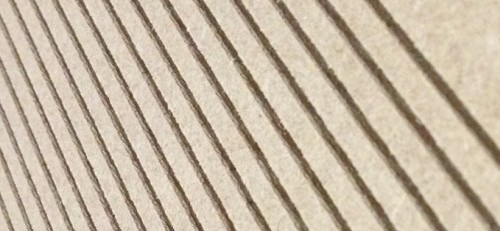
MDF and HDF – or medium-density fiberboard and high-density fiberboard – are two of the trendiest materials in woodworking these days. They’re both engineered by combining wood fiber and glue under immense pressure and heat, and are a suitable alternative to real wood. The recycled nature of their construction makes them environmentally friendly, and the pressure used to create them makes them highly durable. But they carry vastly different price tags, with HDF costing a good deal more than its less dense sibling. So what sets them apart?
What’s the Difference?
It’s tempting to assume that higher density means HDF is always the better choice, but the price isn’t the only thing that differentiates it from the much cheaper MDF. Due to its higher density, HDF is much thinner – and therefore not suitable for creating pieces such as interior moldings or skirting boards. While neither version does well around water, HDF is more water-resistant than MDF, and its density does also make it stronger.
MDF, on the other hand, is much more suitable for furniture and decorative pieces. It’s highly affordable, and has a smooth surface that lends itself well to being painted. Using veneer on MDF can also create the illusion of solid wood. While it’s not as strong as HDF, it’s still a very durable material that won’t expand or contract with heat and humidity. There are various kinds of MDF, such as bendy or ultralite, and each are best suited to specific purposes.
Best Uses for MDF vs HDF
MDF, the lighter and more versatile of the two wood product options, is best used for:
- Furniture
- Flooring in bathrooms or washrooms
- Cabinets or shelves
- Decorative items
HDF, the stronger and more expensive option, should be reserved for projects such as:
- High-use furniture
- Laminate flooring
- Door skins
- Backing panels
Things to Note
Fiberboard has a number of benefits, such as being pest-resistant and easy to work with. There are a number of characteristics you should note, though, before choosing to purchase any amount of MDF or HDF for your project.
- MDF/HDF does not have good holding strength when compared to real wood. If being used for furniture items that need to be frequently dismantled/reassembled, it may not be your best choice.
- MDF/HDF cannot come into contact with water, as it will make the fibers swell and damage is very hard to repair. Do not use for outdoor projects.
- Because of the formaldehyde used in their construction, MDF and HDF are less child-friendly than real wood or other wood alternatives. While there are restrictions on formaldehyde amount and the risk of out-gassing is lower with HDF, it is still a risk.



